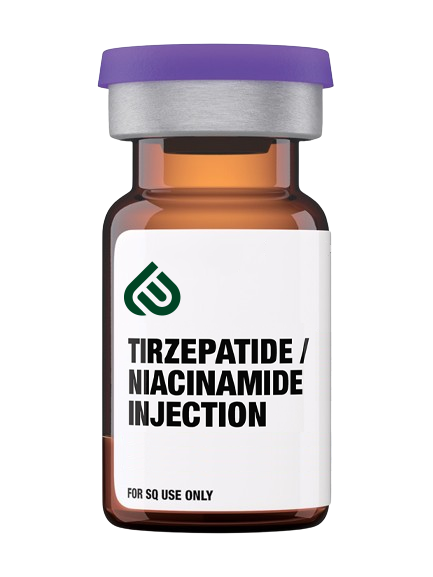
Understanding GLP-1
GLP-1 is a naturally occurring hormone produced in the intestines in response to food intake. Its significance lies in its multifaceted role in the regulation of glucose metabolism, making it a key player in diabetes management.
How GLP-1 Controls Blood Sugar
- Enhanced Insulin Secretion: GLP-1 stimulates the pancreas to release insulin in response to elevated blood sugar levels. Insulin is essential for the uptake of glucose by cells, promoting its utilization for energy and preventing excessive sugar buildup in the bloodstream.
- Inhibition of Glucagon Release: GLP-1 suppresses the release of glucagon, a hormone that raises blood sugar levels by promoting the release of stored glucose from the liver. By inhibiting glucagon, GLP-1 helps maintain a balanced glucose environment.
- Slowed Gastric Emptying: GLP-1 slows down the emptying of the stomach, leading to a gradual and controlled release of nutrients into the bloodstream. This contributes to more stable blood sugar levels, preventing post-meal spikes.
Treat Diabetes
With Luxi you get a customized dosing schedule tailored for you to treat your diabetes and keep the high sugar levels down with the new game changing weekly injections.
Reverse low Insulin Secretion
GLP-1 stimulates the pancreas to release insulin in response to elevated blood sugar levels. Insulin is essential for the uptake of glucose by cells, promoting its utilization for energy and preventing excessive sugar buildup in the bloodstream.
Regain your confidence
One of the downsides of diabetes, is lack of optimal health. Let’s work with you to achieve a health outcome you’ll be proud of.
Improve your health
The purpose of achieving an ideal glucose level is not just to feel good, but to reduce hospital visits and stay healthy.
Try a new approach to treating Diabetes
Our diabetes management program focuses on the cellular level, using a combination of medication and lifestyle changes that are widely recognized as the safest and most effective for achieving long-term results.
In the realm of diabetes management, GLP-1 stands as a beacon of hope, offering not only effective blood sugar control but also a protective shield for cardiovascular health. This natural hormone, when harnessed through medications or lifestyle interventions, represents a paradigm shift in the approach to holistic well-being for individuals living with diabetes.
Semaglutide
Semaglutide injections are an effective new treatment option for people looking to lose or maintain a healthy weight without extreme dieting or exercise. It is a once-a-week injection that easily fits into a busy schedule. The benefits are two-fold: reduce hunger cravings and lose weight faster when combined with a low-calorie diet. Keep in mind that you must put in the work to reap optimal results from Semaglutide. Try exercising for 30 minutes every day and eating nutrient-rich foods. Empty calories make it harder to achieve your desired weight goal.
- Weight Loss
- Improved Glycemic Control
- Cardiovascular Benefits
- Lower Blood Pressure
- Potential Lipid Profile Improvement


Tirzepatide
Tirzepatide injection belongs to the class of drugs known as incretin mimetics. It works by assisting the pancreas in releasing the appropriate amount of insulin when blood sugar levels are elevated. When you consume carbs, for instance, the pancreas will produce the correct amount of insulin when blood sugar levels are high, so preventing big rises. Insulin facilitates the transport of sugar from the blood into various tissues, where it is utilized for energy. Tirzepatide slows gastric emptying, allowing food to remain in the stomach longer therefore, making you feel full for longer durations. Tirzepatide is also effective at suppressing appetite and preventing overeating.
- Significant Weight Loss
- Improved Glycemic Control
- Cardiovascular Benefits
- Blood Pressure Regulation
- Lipid Profile Improvement
Understanding The Health Benefits of GLP-1 (Semaglutide/Tirzepatide)
GLP-1 is a naturally occurring hormone produced in the intestines in response to food intake. Its significance lies in its multifaceted role in the regulation of glucose metabolism, making it a key player in diabetes management.
Enhanced Insulin Secretion
GLP-1 stimulates the pancreas to release insulin in response to elevated blood sugar levels. Insulin is essential for the uptake of glucose by cells, promoting its utilization for energy and preventing excessive sugar buildup in the bloodstream.
Inhibition of Glucagon Release
GLP-1 suppresses the release of glucagon, a hormone that raises blood sugar levels by promoting the release of stored glucose from the liver. By inhibiting glucagon, GLP-1 helps maintain a balanced glucose environment.
Slowed Gastric Emptying
GLP-1 slows down the emptying of the stomach, leading to a gradual and controlled release of nutrients into the bloodstream. This contributes to more stable blood sugar levels, preventing post-meal spikes.
Blood Pressure Regulation
GLP-1 receptors are present in the heart and blood vessels. Activation of these receptors has been associated with vasodilation, leading to lower blood pressure levels.
Anti-Inflammatory Effects
GLP-1 exhibits anti-inflammatory properties, potentially reducing inflammation in blood vessels and mitigating the risk of cardiovascular complications.
Improved Endothelial Function
GLP-1 may enhance the function of endothelial cells lining blood vessels, promoting better blood flow and reducing the risk of atherosclerosis.
Reduced Cardiovascular Events
Some GLP-1 receptor agonists have demonstrated a reduction in major cardiovascular events, making them valuable additions to the treatment regimen for individuals with diabetes at risk of cardiovascular complications.
Weight Loss
GLP-1 is known to have appetite-suppressant effects. Medications based on GLP-1 receptor agonists, when used for diabetes treatment, often lead to weight loss as a side effect. This can be particularly beneficial for individuals with obesity or those looking to achieve and maintain a healthier weight.
Gastrointestinal Health
GLP-1 has been found to have protective effects on the gastrointestinal tract. It may contribute to the maintenance of gut health and the prevention of certain gastrointestinal disorders.
Neuroprotection
Some studies suggest that GLP-1 may have neuroprotective effects. It has been explored for its potential in the treatment of neurodegenerative disorders, such as Alzheimer's disease and Parkinson's disease.
Anti-Inflammatory Effects
GLP-1 exhibits anti-inflammatory properties, and chronic inflammation is associated with various health conditions. By reducing inflammation, GLP-1 may contribute to overall health and well-being.
Improved Liver Health
GLP-1 receptor agonists have shown promise in improving liver health. They may help in reducing liver fat and inflammation, potentially benefiting individuals with non-alcoholic fatty liver disease (NAFLD).
Renoprotective Effects
There is evidence suggesting that GLP-1 may have protective effects on the kidneys. It may help mitigate the progression of diabetic kidney disease and offer renal protection in various conditions.
Enhanced Wound Healing
GLP-1 has been investigated for its potential role in promoting wound healing. It may contribute to faster and more effective healing of wounds, which is particularly relevant for individuals with diabetes who may face challenges in wound healing.
Improved Mood and Cognitive Function
Some research indicates that GLP-1 may have positive effects on mood and cognitive function. It is being explored for its potential role in mental health and cognitive disorders.
Regulation of Bone Health
There is emerging evidence suggesting a connection between GLP-1 and bone health. GLP-1 receptors are found in bone tissue, and research is ongoing to understand the potential impact of GLP-1 on bone metabolism.


